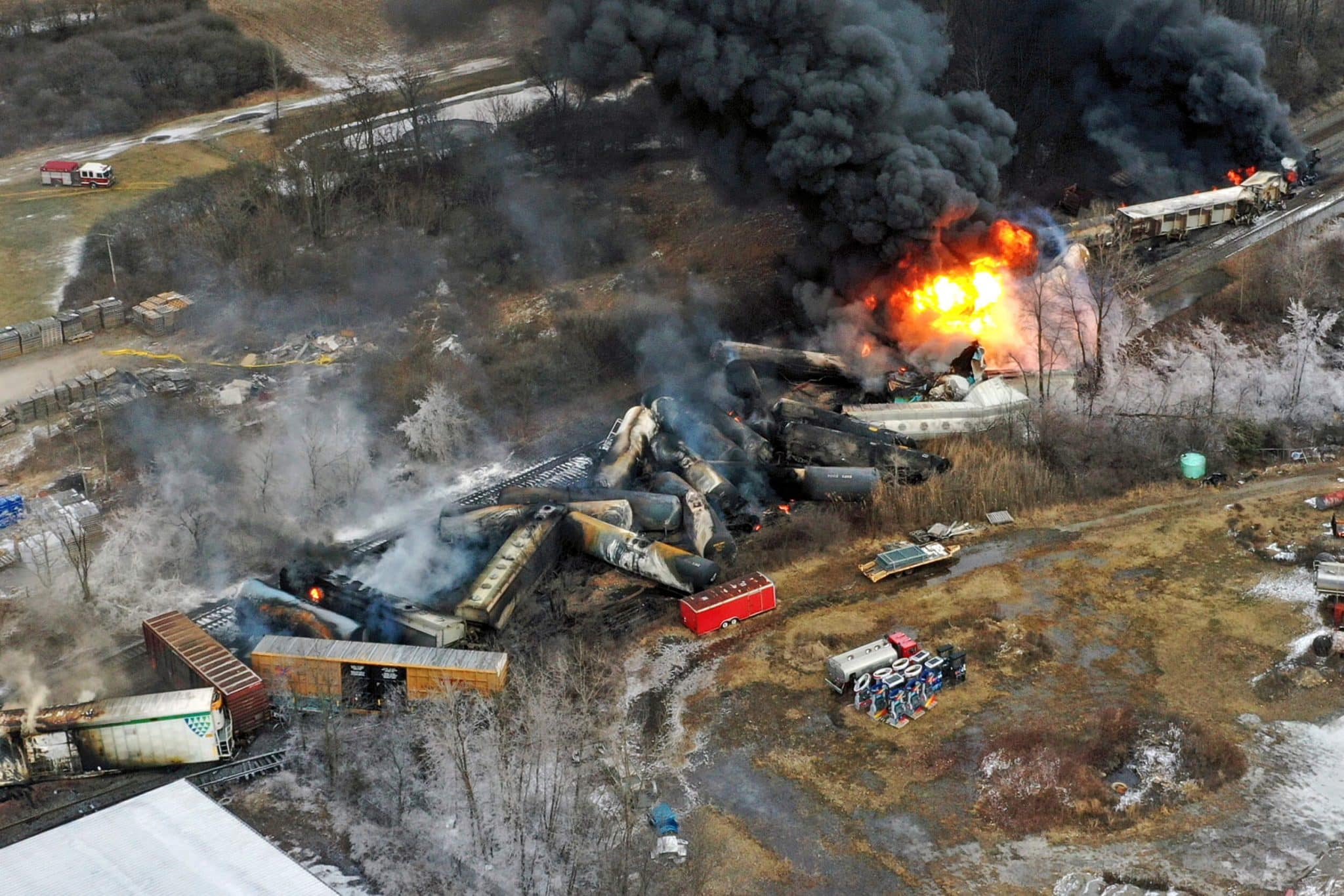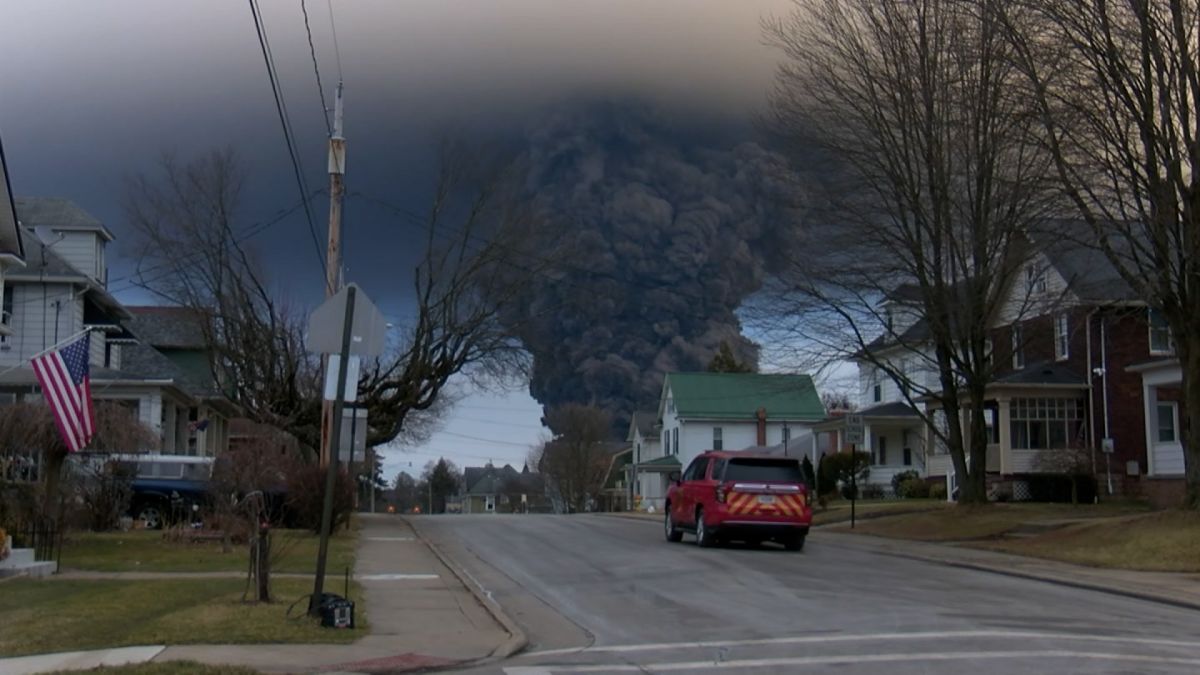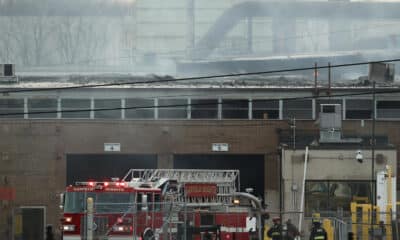News
OHIO: 500,000 Gallons Of Toxic Wastewater From Train Derailment Moved To Texas

(Deer Park, Texas) — Toxic wastewater in Ohio used to extinguish a fire after a train derailment in Ohio was transported to a Houston suburb for disposal, according to a county official in Texas, who said there are still unanswered questions about the material’s transportation and disposal.
At a press conference on Thursday, Harris County Judge Lina Hidalgo stated that 500,000 gallons (1.8 million liters) of wastewater had been delivered to Deer Park, Texas.
“I know our community was as surprised as I was by the news,” Hidalgo said. “I also want people to understand that there are many things we don’t know that we should. That doesn’t necessarily imply that something is wrong. And I want to emphasize that.”
Hidalgo said the county learned of the wastewater transfer on Wednesday from the site of a fiery Feb. 3 derailment in East Palestine, Ohio, which prompted evacuations after toxic chemicals were released from five derailed tanker rail cars carrying vinyl chloride that was in danger of exploding.
The wastewater was delivered to Texas Molecular, which injects hazardous waste into the ground. The company told KHOU-TV that it has experience with this type of disposal.
Tainted Water All over Ohio
“Our technology safely removes hazardous constituents from the biosphere. “We are part of the solution to reduce risk and protect the environment, whether in our local area or other places that require the environmental capabilities we provide,” the company in Ohio stated.
Hidalgo stated that Texas Molecular informed county officials that it had taken delivery of 500,000 gallons of firefighting water, with an additional 1.5 million gallons expected to be hauled to the site by approximately 30 trucks per day.
“It’s a very real problem; we were told yesterday that the materials would arrive, only to find out today that they’ve been here for a week,” said Hidalgo, who wants more information on the injection well’s precautions.
The delivery also raises concerns about the modes of transportation, which she said could include trains, as well as the potential health effects on workers involved in the transfers and the communities between the Ohio crash site and the disposal area in Deer Park, one of 34 communities in Harris County.
Even after discussions with officials from the federal Departments of Transportation and the Environmental Protection Agency, the Texas Commission on Environmental Quality and other industry and environmental experts, Hidalgo said that uncertainties remain.
Ohio and Romulus, which are closer to the crash site, could also handle the wastewater
“The government officials have readily provided the information they have, but what we’re learning is that they don’t appear to have the complete picture,” she said. “I’m not sure who has a complete picture of what’s going on here, and that’s a problem,”
She stated that Harris County has approximately ten injection wells capable of receiving hazardous commercial waste, making the area one of the few locations where the materials could be disposed of. However, she stated that similar facilities in Vickery, Ohio, and Romulus, Michigan, which are closer to the crash site, could also handle the wastewater.
“All of this could be for logistical reasons. There could be financial reasons. “Perhaps Texas Molecular outbid Michigan,” Hidalgo speculated. “It doesn’t mean anything sinister is going on, but we need to know the answer to this question.”
Hidalgo said that she found out about the disposal site from a journalist, not a regulatory agency or the company, which she called “unacceptable.”
Texas Molecular, according to the Texas Commission on Environmental Quality, “is authorized to accept and manage a variety of waste streams, including vinyl chloride, as part of their… hazardous waste permit and underground injection control permit.”
The chemical is “very, very toxic,” according to Dr. George Guillen, executive director of the Environmental Institute of Houston, but the risk to the public is minimal.
Improving rail safety while regulators work to tighten safety regulations.
“In some cases, this injection is usually 4,000 or 5,000 feet below any drinking water aquifer,” said Guillen, a biology and environmental science professor at the University of Houston-Clear Lake.
Guillen and Deer Park resident Tammy Baxter expressed concern about transporting the chemicals from East Palestine to Deer Park, which is more than 1,300 miles (2,090 kilometers).
“A closer deep well injection is required,” Baxter told KTRK. “It’s stupid to put it on the road. We have accidents all the time… It’s ridiculous to move it that far.”
Transportation Secretary Pete Buttigieg, who visited the derailment site on Thursday, warned Norfolk Southern to keep its promises to clean up the mess outside East Palestine and help the town recover.
Buttigieg has also announced a package of reforms aimed at improving rail safety while regulators work to tighten safety regulations.
SOURCE – (AP)


































